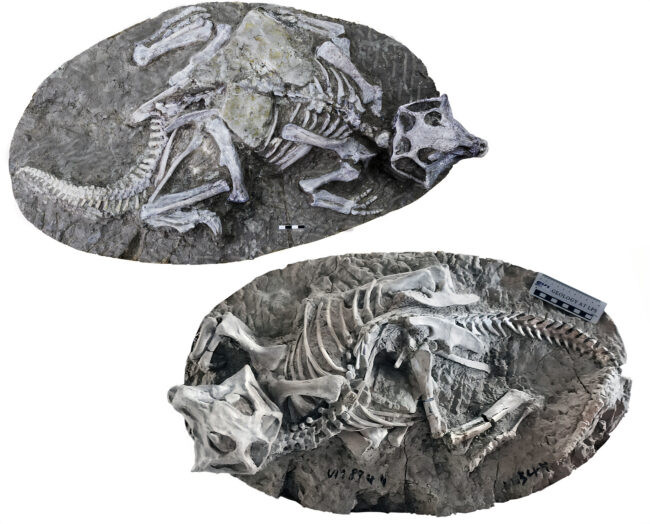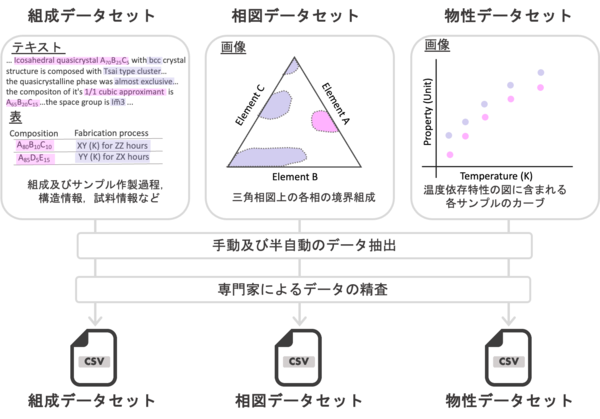2024-11-06 コロンビア大学

Two perfectly articulated skeletons of the sheep-size dinosaur Psittacosaurus, found in China’s Yixian Formation. New research suggests they died in burrow collapses, not via volcanism, as previously thought. (Jun Liu, Institute of Paleontology and Paleoanthropology, Chinese Academy of Sciences)
<関連情報>
- https://lamont.columbia.edu/news/did-worlds-best-preserved-dinosaurs-really-die-pompeii-events
- https://www.pnas.org/doi/10.1073/pnas.2322875121
中国白亜紀前期の扁平羽毛恐竜と立体恐竜は、極めて急速に、しかも壊滅的な被害を受けずに保存された Extremely rapid, yet noncatastrophic, preservation of the flattened-feathered and 3D dinosaurs of the Early Cretaceous of China
Scott A. MacLennan, Jingeng Sha, Paul E. Olsen, +6, and Blair Schoene
Proceedings of the National Academy of Sciences Published:November 4, 2024
DOI:https://doi.org/10.1073/pnas.2322875121
Significance
Traditionally, the spectacular preservation of fossils of feathered dinosaurs and early birds and other animals found in sedimentary strata of the Yixian Formation in northeast China has been attributed to Pompeii-like volcanic catastrophes. We provide high-resolution geochronology and sedimentological analysis challenging this model and show that these strata instead record normal life and death processes preserved in a succession of depositional environments that span less than 100 thousand years.
Abstract
Northeast China’s Early Cretaceous Yixian Formation preserves spectacular fossils that have proved extraordinarily important in testing evolutionary hypotheses involving the origin of birds and the distribution of feathers among nonavian dinosaurs. These fossils occur either flattened with soft tissue preservation (including feathers and color) in laminated lacustrine strata or as three-dimensional (3D) skeletons in “life-like” postures in more massive deposits. The relationships of these deposits to each other, their absolute ages, and the origin of the extraordinary fossil preservation have been vigorously debated for nearly a half century, with the prevailing view being that preservation was linked to violent volcanic eruptions or lahars, similar to processes that preserved human remains at Pompeii. We present high-precision zircon U-Pb geochronology from cores and outcrops, demonstrating that Yixian Formation accumulation rates are more than an order of magnitude higher than usually estimated. Additionally, we provide zircon provenance and sedimentological data from 3D dinosaur fossils, which imply that their death and burial occurred in collapsed burrows, rather than via a catastrophic volcanogenic mechanism. In the studied area, the three principal fossil-rich intervals of the Yixian occur as a cyclic sequence that correspond to periods of high precipitation. Using Bayesian–Markov Chain Monte Carlo approaches, we constrain the total duration of the sequence to less than ~93,000 y and suggest that climatic precession paced the expression of these cyclic sediments. Rather than representing multiple, Pompeii-like catastrophes, the Yixian Formation is instead a brief snapshot of normal life and death in an Early Cretaceous continental community.


